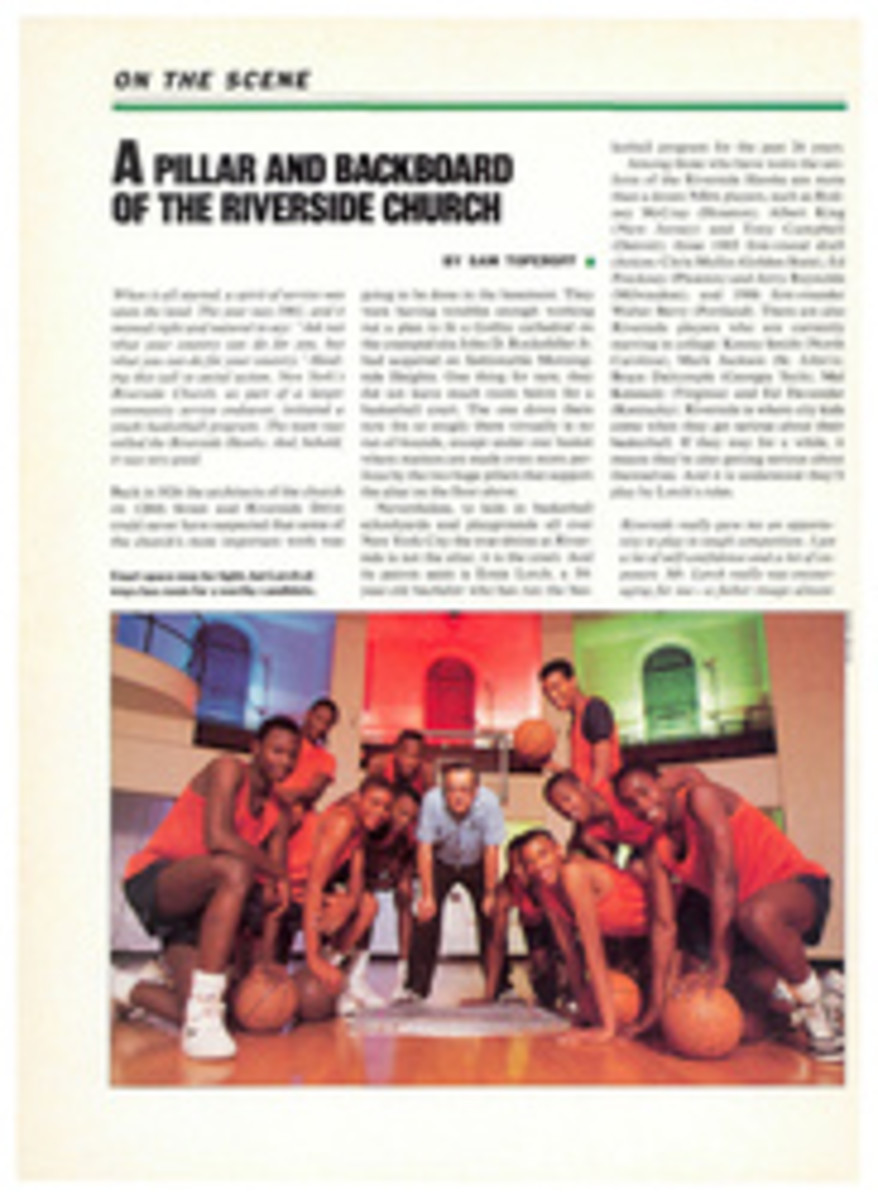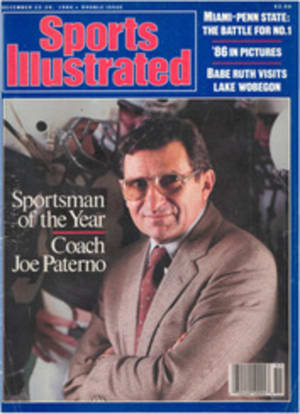
BOUNCED ON THE BOUNDING MAIN
An America's Cup campaign coming apart at the seams is not a pretty sight. When it happens to a program bountifully endowed with everything it supposedly takes to win the Cup, the sensitive observer averts his eyes.
America II, a shoo-in in October, a safe bet in November, pulled up lame in the December round-robin of the America's Cup challenger trials. After three losses in the first four races to boats America II had beaten handily in earlier rounds, the once proud effort of the New York Yacht Club was in a shambles. "We're digging ourselves a pretty deep hole," said John Kolius, America II's skipper, after losing the fourth race to France's French Kiss and dropping to fifth place in the 12-boat field. "But nobody's throwing dirt on top of us yet." Burial was postponed until Sunday, when the seemingly unbeatable New Zealand nailed the coffin shut.
That Kiwi victory set the stage for the drama of the challenger semifinals, which begin Dec. 28. First-place New Zealand will face fourth-place French Kiss, and second-place Stars & Stripes will meet USA, which finished third. Each semifinal match will be a best-of-seven series, and the two winners will proceed to the best-of-seven challenger finals starting on Jan. 13.
New Zealand has emerged as not only the slickest organization in the Louis Vuitton Cup, the official name of the challenger trials, but also the betting favorite to take the America's Cup away from Australia. Since the first round, when she lost once, to Dennis Conner's Stars & Stripes, New Zealand has not lost a single race. Her crew work, which was good from the start, has become superb. Chris Dickson, the 25-year-old Kiwi skipper, claims his boys can set a spinnaker in 6 seconds and are working on 5½. Even New Zealand's hardware seems better than anyone else's. Rarely did any of the 1,001 things that can break when the wind blows hard and the seas are rough actually do so, and when something did snap on the Kiwi boat, the versatile crew fixed it, also in record time.
Of course, sailing alone lessens the strain on both hardware and humans. New Zealand won its December series of races by an average of 3 minutes, 17 seconds. Only three opponents even came close—Stars & Stripes, which lost to New Zealand by 32 seconds; Britain's White Crusader, which lost by 6 seconds when the Kiwis broke a spinnaker pole; and America II, which sailed one of her best races in losing by 15 seconds. On the last day, when French Kiss lost her final race, America II missed the semifinals by only one point.
So, for the first time in 135 years the New York Yacht Club will be a bystander at the America's Cup and will have to share a grandstand with the British, who have been sitting on the sidelines since the Cup became a battle among colonials in 1967. When something like that happens, somebody has to pay, and at the moment fingers are pointed at America II's 31-year-old designer, Bill Langan. Langan is chief designer with Sparkman & Stephens, the old-line New York firm of naval architects who designed all but one of the America's Cup winners between 1958 and 1980. Kolius said at his last press conference, "We made the boat look a little better than it was early on." And commodore Arthur Santry of the NYYC, who is also a member of the America II syndicate's executive committee, said, "I don't think you can get anything more out of that boat than they got out of it." But as Gary Mull, naval architect for USA and a designer who has been around a lot longer than Langan, once said, "When a boat wins, there are seven people lined up on the dock to take credit. When it loses, all seven turn and point at the designer." Chances are that once the pain has subsided, recriminations will be more equitably distributed.
In contrast to America II's round-three fade, Stars & Stripes matched boat to conditions better in December, when it counted most, than she had in November's second round, and was able, near the end of the series, to draw clear of the traffic jam going on around third and fourth place. Amazingly, at the halfway point of the December series, with New Zealand doing a horizon job on the rest of the field and with French Kiss in second, four boats—Stars & Stripes, America II, USA and White Crusader—were stacked within three points of each other. This was after two months and 180 races.
A few boats entered the December round much improved by changes made to keels, spars and sails during the 18-day break between series. One was USA, Tom Blackaller's radically different, two-ruddered boat from the St. Francis Yacht Club, but the improvement took a while to register. In the first few days of racing USA faced every patsy in the fleet, boats she could be expected to beat with her mainsail at half-mast. When USA lost the first of those races to Italia, after a blown spinnaker caught under the American boat and fouled both her fore and aft rudders, and then lost to an improved Heart of America, the San Francisco boat was close to being written off by everybody except Blackaller.
"This is a fast boat. We're still learning how to sail it," the USA skipper said over and over again. It pays to listen to Tom Blackaller. From that point on, USA beat every heavy in the fleet until Monday, the last day of round three, when she met New Zealand and lost, just like everybody else.
Still, USA just may develop speed enough to beat New Zealand, but first Blackaller has to get past Conner and Stars & Stripes in the semis. "Our boat is the fastest out there right now," insisted Blackaller. "The only thing that's stopping us is us, and we're eminently capable of that." (Stopping Kookaburra III remained an elusive goal for Alan Bond's Australia IV in the defender trials. After the third series the order was Kookaburra III, Australia IV, Kookaburra II and Steak 'n Kidney.)
Summer has arrived in Western Australia, and during the December races the notorious Fremantle Doctor made several appearances. They say the Doctor is an afternoon sea breeze from the southwest that relieves the pain of a heat-oppressed population. That's true, but the term breeze is a bit misleading. The Doctor can be gentle, but it can also tear across Gage Roads, the 10-mile-wide stretch of Indian Ocean where the America's Cup races are being held, like an express train, wreaking havoc with spinnakers, booms and even the nimblest crewmen.
One day when the so-called breeze was blowing 35 knots, John Spence, 22, the mastman on Heart of America, was belowdecks getting ready for a spinnaker change. Suddenly he found himself overboard. "When they hauled the new spinnaker up," said Spence, "as soon as it filled, it sucked me out of the hatch. It was like taking the elevator up to ladies apparel."
When the Doctor checks in around Dec. 28, the four survivors of the challenger series should expect similar roller coaster rides. In America's Cup racing, even the mighty can be dunked in the twinkling of an eye. Just ask the New York Yacht Club.
PHOTO
ROBERT GARVEY/BLACK STAR
Blackaller (in white) pointed the way for USA's big December comeback.
PHOTO
ROBERT GARVEY/BLACK STAR
New Zealand's 15-second victory over America II eliminated the NYYC boat.

